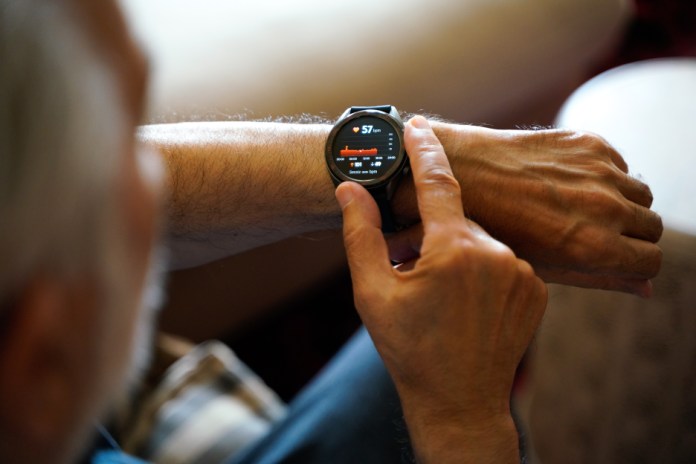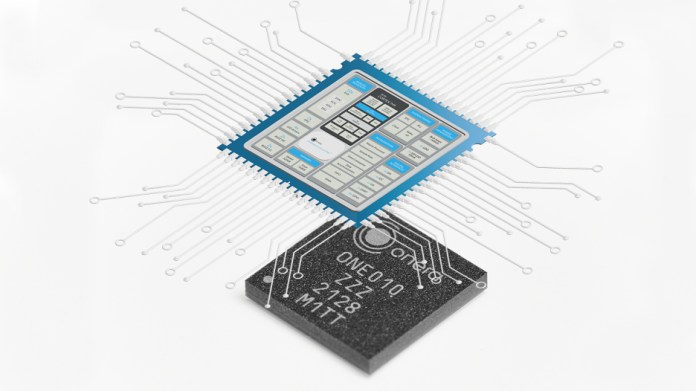The next generation of wearables as diagnostic and monitoring devices is taking the health-care realm from reactive to proactive by adding artificial intelligence and cloud analytics to facilitate a holistic assessment of various conditions. Most of these wearable devices are hooked into internet-of-things systems and thus can facilitate medical treatment from the patient’s own home.
Medical-grade wearable devices like smart thermometers and connected inhalers provide health-care professionals with a much bigger dataset as patients go about their daily lives. However, these wearable devices must combine seamless connectivity and longer battery life with small form factors, ease of integration, and sensor accuracy.
Health- and lifestyle-conscious consumer devices such as medical wristbands and smartwatches focus on prevention and maintenance rather than treatment. Consumer wearables offer health-tracking features like blood-oxygen saturation monitoring, sleep tracking, electrocardiogram (ECG) sensing, and heart-health monitoring.
A single wearable device can monitor multiple biomarkers — body temperature, blood pressure, body hydration, alcohol, lactate, and glucose trends — while enabling real-time and non-invasive monitoring of a person’s health and well-being. Deloitte forecasts that the wearable medical sensors market will grow at a compound annual growth rate of 19% by 2024, with 280 million smartwatches/fitness trackers and 160 million wearable medical sensors shipping in 2024.
A lot is going on in the hardware and software realms for consumer- and medical-grade wearable device designs. First, let’s take a look at the hardware side of the story.

Smartwatches offer health-tracking features like blood-oxygen saturation monitoring, sleep tracking, ECG sensing, and heart-health monitoring. (Source: Shutterstock)
Biomedical-Lab-on-Chip
Small and mid-sized semiconductor companies look quite prominent when it comes to wearable device designs for health-care applications. Take, for example, Onera Health, a Dutch-American firm with roots in imec, a nanoelectronics research hub headquartered in Belgium. Onera Health has recently demonstrated an ultra-low–power biosignal chip for wearable designs.
Its biomedical system-on-chip (SoC) — capable of acquiring and processing multiple biosignals — is now available to serve a broad range of wearable devices for health-care applications. The Eindhoven, Netherlands–based semiconductor outfit claims that its Biomedical-Lab-on-Chip combines clinical-grade physiological measurements and analysis with ultra-low power consumption to better serve space-constrained medical wearable designs.

Onera demonstrated its Biomedical-Lab-on-Chip in the lead-up to CES 2022 in Las Vegas. (Source: Onera Health)
It’s a multi-channel sensor readout system with integrated data processing, power management, and interfacing features. The wide range of on-chip biomedical sensor readouts includes 10 readouts for ExG, EEG, ECG, EMG, and EOG coverage; two bioimpedance readouts; and two readouts for photoplethysmography (PPG). The chip also makes available a significant amount of SRAM and embedded flash to support several data streams with accurate data synchronization.
Furthermore, the biomedical chip features several standard interfaces: universal asynchronous receiver/transmitter (UART), serial peripheral interface (SPI), I2C, and I2S. The interface part is crucial for the accurate and reliable measurement of an array of vital signs such as ECG, temperature, and differential capacitance.
Additionally, a health-care interface IC must be designed to serve a wide array of home-use and single-use medical sensors for health-care wearables and fitness trackers. For instance, the ENS62020 sensor interface IC unveiled by EnSilica has been designed to work alongside IoT processors and consumes just ~10 µA per sensor.
The ENS62020 interface IC features a highly sensitive capacitive sensor interface, which makes it suitable for designs employing MEMS sensors. It incorporates two photodiode drivers/photodetector readouts, two differential ECG sensor channels suitable for three-lead ECG with <1.6-µVrms noise levels, a highly sensitive capacitive sensor channel, a temperature sensor, and a low-power analog-to-digital converter.
The software side
There is a lot of action on the software side as well. Zepp Health, which recently unveiled the Huangshan 2S chip for wearable designs, has also released a smartwatch operating system (OS). The company claims that at 55 MB, the Zepp OS is 1/10 the size of the firm’s previous Amazfit OS and 1/28 the size of the Apple WatchOS 8.
Zepp OS supports 4G/5G modules and integrates TCP/IP network protocols to allow the smartwatch to be connected directly to the cloud without a smartphone. Additionally, it features a stable Bluetooth channel to connect with smartphones, smart homes, payment systems, and other health-care devices. And its Mini Program framework enables developers to create new apps that leverage the data from the company’s biosensor array and AI chip.
Zepp Health has licensed the Zepp OS and Huangshan 2S chip for wearable designs to Yitong Technology in China, which is employing these technology building blocks in setting up connections with cars and smart-home appliances.
Software algorithms for activity monitoring, context, and gesture recognition constitute another critical part of the wearable design recipe. For example, the MAXREFDES104# evaluation and development platform for health-sensing wearable applications from Maxim Integrated, now part of Analog Devices Inc., features a biometric algorithm hub with embedded heart rate, oxygen saturation, and ECG algorithms. The algorithm output and raw data can be streamed through Bluetooth to a PC GUI for demonstration, evaluation, and customized development.
The health-sensor wearable platform integrates a two-in-one PPG plus ECG analog front-end sensor, a human body-temperature sensor, a microcontroller, a power management IC, and a three-axis accelerometer. The medical wearable design solution comes in a 3D-printed enclosure.
Next-generation medical wearables
Both consumer- and medical-grade wearable gadgets continue to get miniaturized while boosting their measurement and analysis capabilities. At the same time, wearable design ecosystems continue to build around the hardware and software building blocks for diagnostic and monitoring tasks.
Such breakthroughs in medical wearable designs could help millions of people struggling with health ailments and chronic conditions related to sleep, neurological, cardiac, and respiratory care. Here, while powerful SoCs continue to bolster processing performance and lower power usage, algorithms are being enhanced to efficiently carry out tasks like blood-pressure measurement.
The next generation of medical wearable devices built around these hardware and software building blocks is available for use across various health-care settings. These devices are enabling clinicians to personalize care with actionable data. Moreover, these wearables provide physiological and health-related data to physicians in a variety of clinical and non-clinical environments to optimize patient care and reduce health-care costs.
While being aided by IoT and cloud technologies, wearable devices continue to gain traction in the health-care world. And the Covid-19 pandemic has only accentuated the demand for consumer- and medical-grade wearables.
Advertisement





